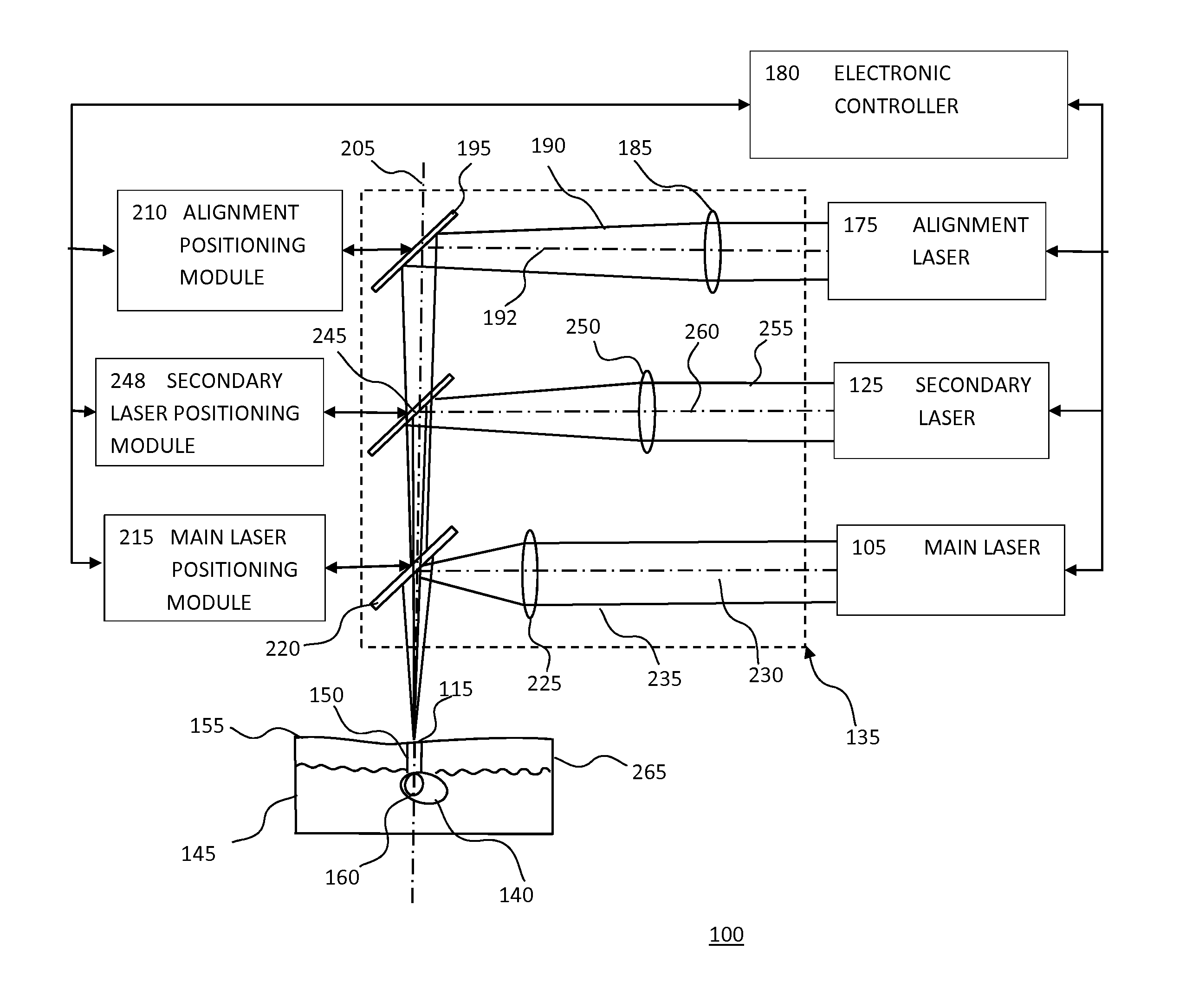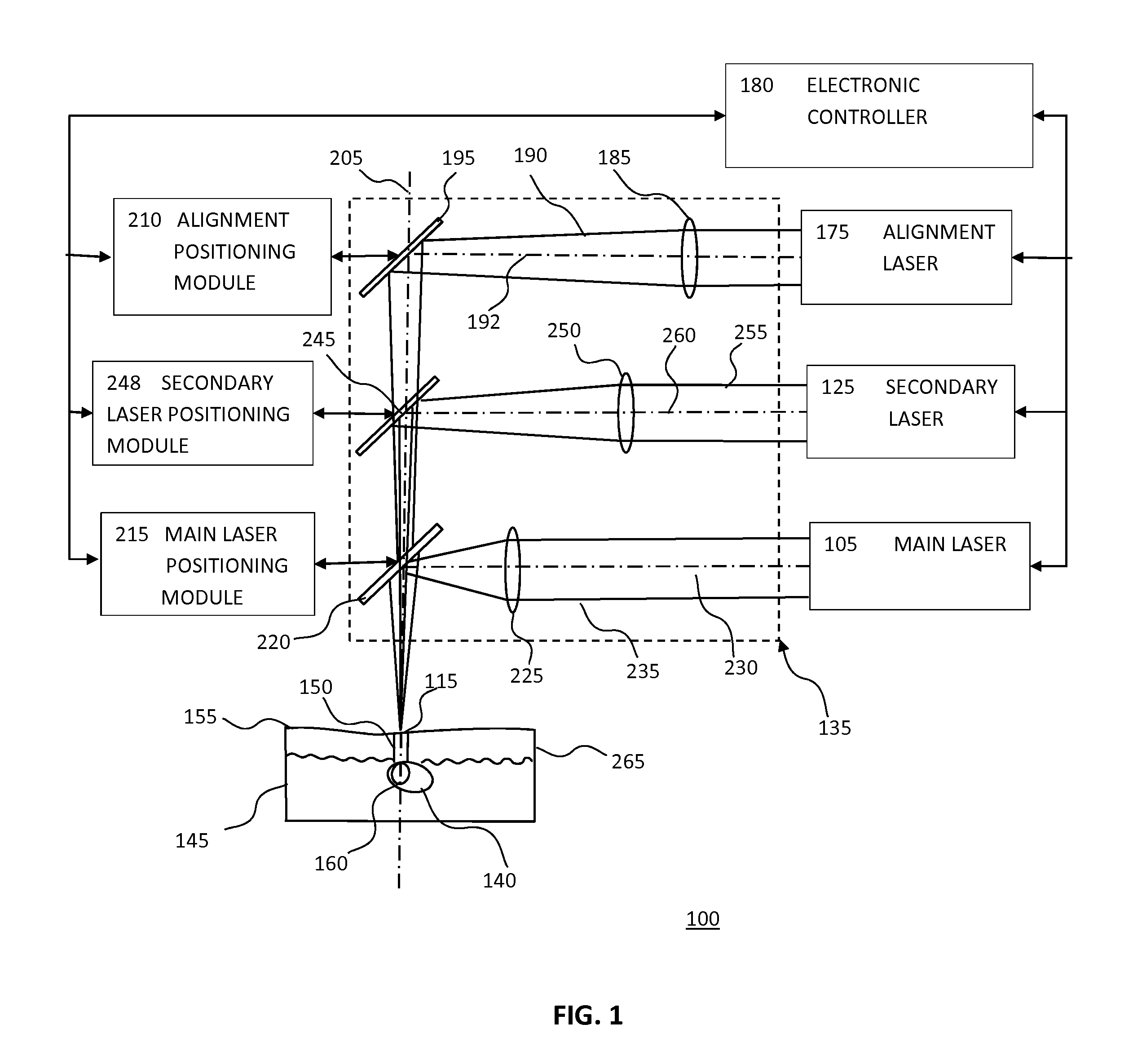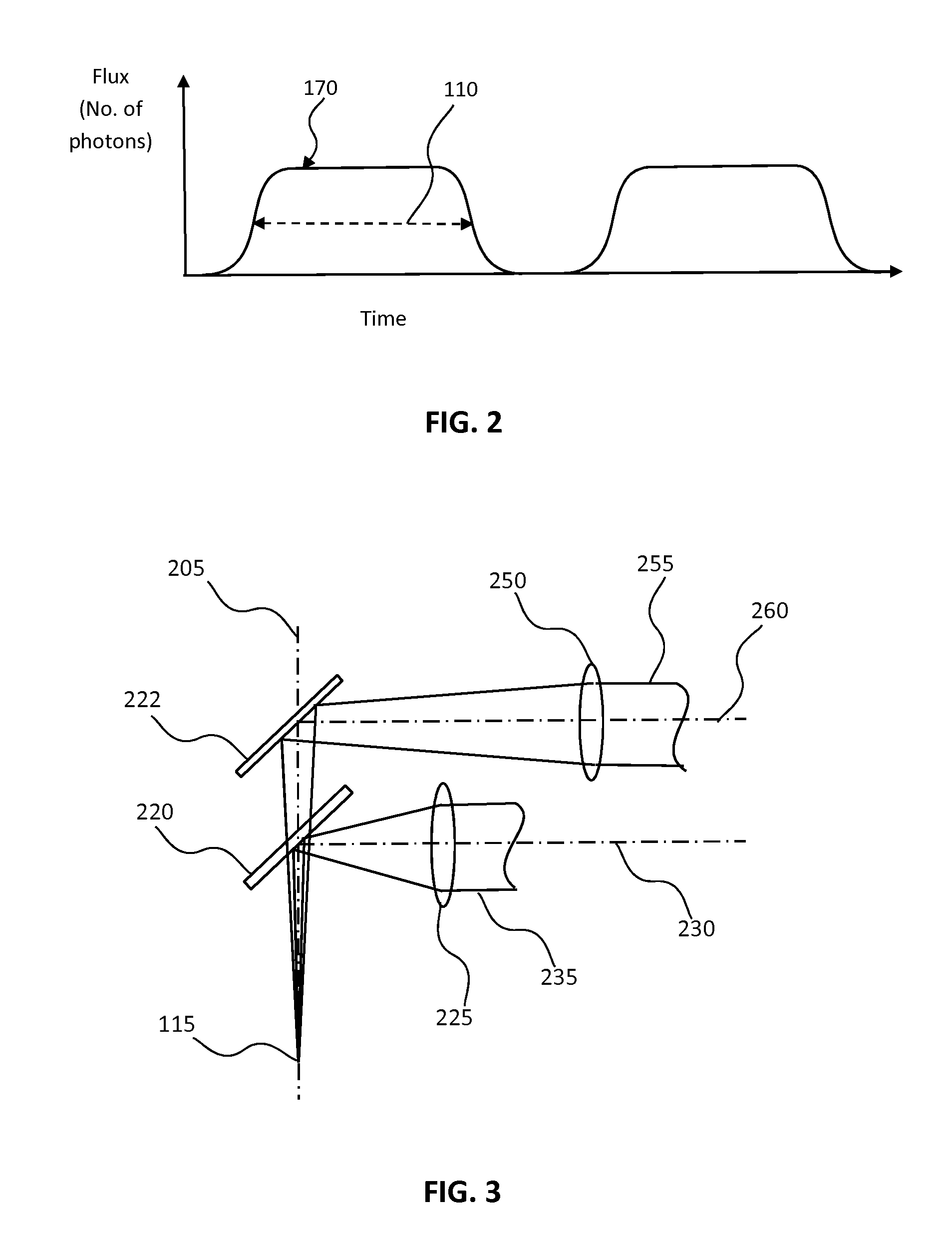Tattoo removal with two laser beams via multi-photon processes
a multi-photon processing and tattoo technology, applied in the field of dermatological treatment using multi-photon processing, can solve the problems of difficult tattoo removal, difficult to remove by abrasion, and a little duller tattoo, so as to reduce the energy loss of main laser pulse, reduce the intensity of main laser entrance, and reduce the pain
- Summary
- Abstract
- Description
- Claims
- Application Information
AI Technical Summary
Benefits of technology
Problems solved by technology
Method used
Image
Examples
Embodiment Construction
[0028]The present invention relates to methods and apparatus for dermatological treatment that use multi-photon processing events as well as channel creation to reach material to be treated or removed. In particular, the present invention is directed to tattoo, pigment, and blemish removal using two lasers, a Secondary Laser, which creates a channel within the skin, and a Main Laser, which passes through said channel and removes pigments or material using multi photon ablation. These two beams may be directed to the patient's skin coaxially at approximately the same time, or where one is in advance of the other, depending on factors that include skin type, skin conditions, and pigment types.
[0029]The Secondary Laser
[0030]A purpose of the Secondary Laser is to create a channel that may begin at the outermost layer of skin and terminate in the area of the skin where material, such as tattoo ink or pigmented skin, is targeted for ablation. This Secondary Laser has a preferred pulse dur...
PUM
 Login to View More
Login to View More Abstract
Description
Claims
Application Information
 Login to View More
Login to View More - R&D
- Intellectual Property
- Life Sciences
- Materials
- Tech Scout
- Unparalleled Data Quality
- Higher Quality Content
- 60% Fewer Hallucinations
Browse by: Latest US Patents, China's latest patents, Technical Efficacy Thesaurus, Application Domain, Technology Topic, Popular Technical Reports.
© 2025 PatSnap. All rights reserved.Legal|Privacy policy|Modern Slavery Act Transparency Statement|Sitemap|About US| Contact US: help@patsnap.com



